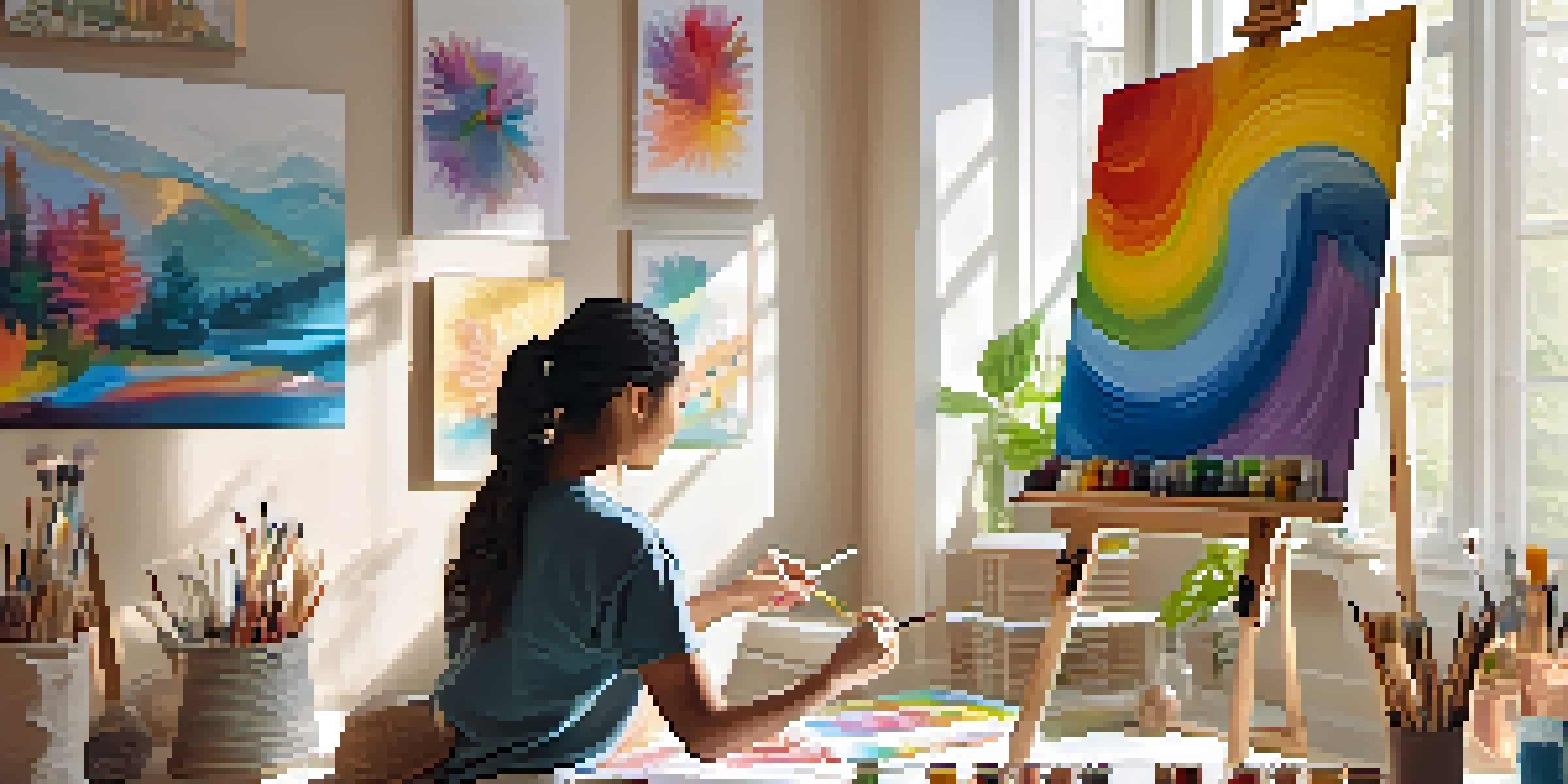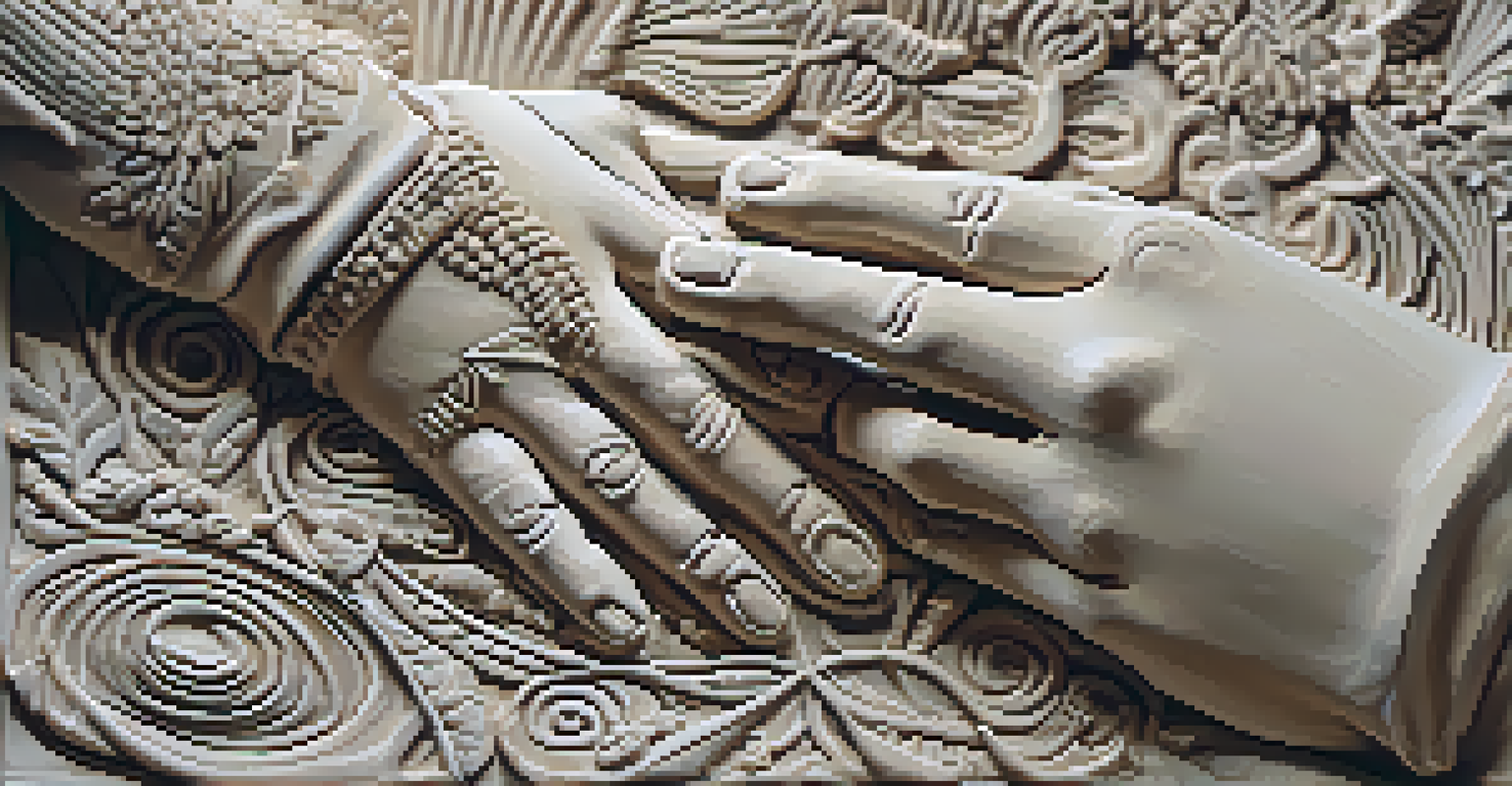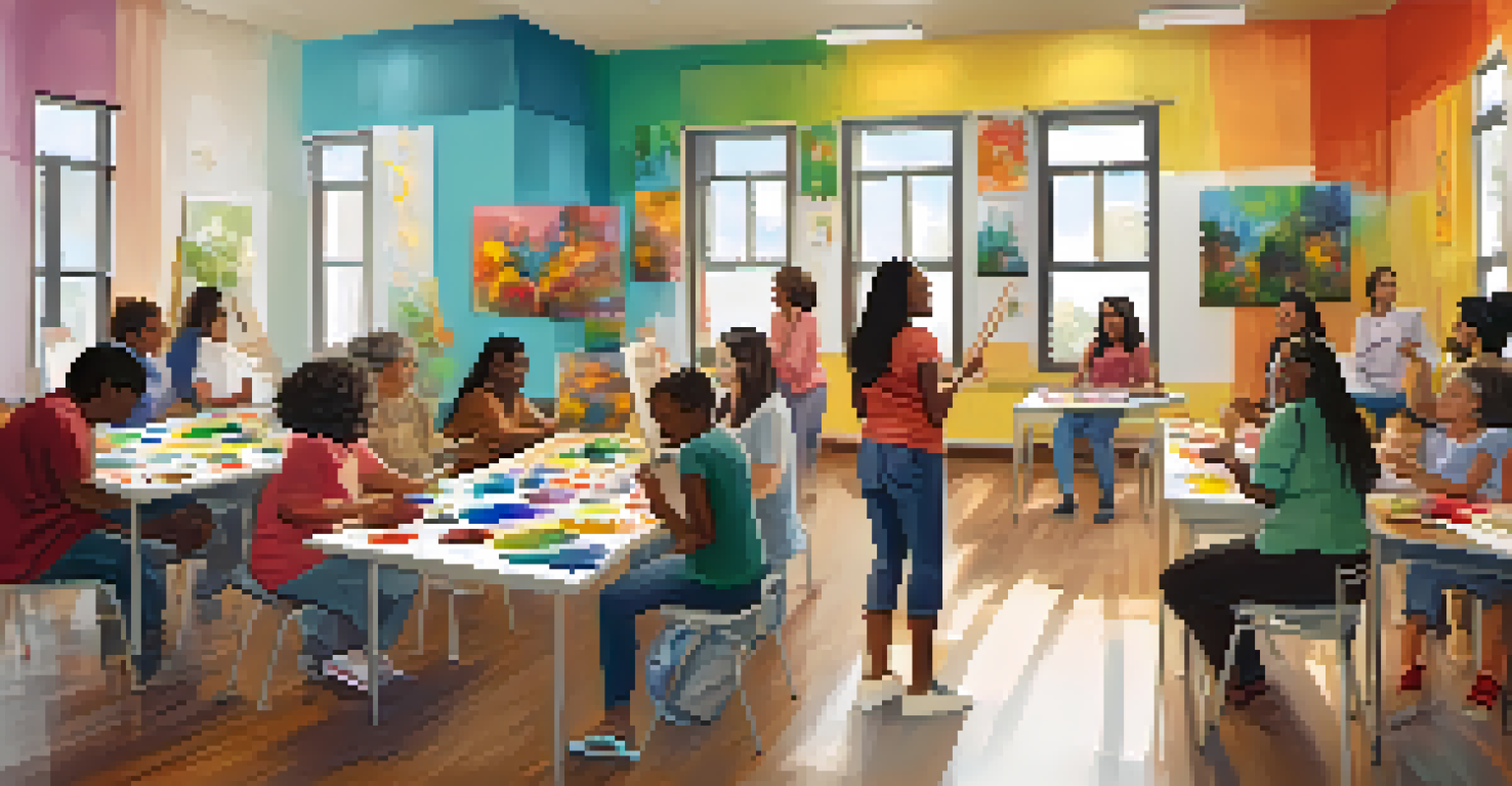How Art Therapy Affects Emotions and Mental Health

What is Art Therapy and Its Purpose?
Art therapy is a therapeutic practice that uses artistic expression to help individuals explore their feelings and emotions. It’s not just about creating art; it's about using the creative process to understand oneself better. Through various forms of art, like painting or sculpting, people can express thoughts that might be difficult to verbalize, making it a powerful tool for communication.
Art enables us to find ourselves and lose ourselves at the same time.
The primary purpose of art therapy is to promote healing and personal growth. Whether someone is dealing with anxiety, depression, or trauma, the process of making art can facilitate emotional expression and provide relief. Practitioners often guide clients in using art as a way to uncover deeper issues, leading to insights that can be transformative.
Moreover, art therapy is inclusive and adaptable, making it suitable for individuals of all ages and backgrounds. It can be utilized in various settings, from hospitals to community centers, allowing a wide range of people to benefit from its therapeutic effects. This versatility is a significant advantage, as it opens doors for diverse populations to engage in healing through creativity.
The Emotional Benefits of Art Therapy
One of the most profound emotional benefits of art therapy is the opportunity it provides for self-expression. Often, individuals struggle to articulate their feelings, but through art, they can visually represent their emotions. This non-verbal form of communication can be particularly beneficial for those who find it hard to express themselves through words.

Additionally, engaging in creative activities can be incredibly cathartic. It allows individuals to release pent-up emotions in a safe space, which can lead to a sense of relief and relaxation. This release can also help reduce anxiety and stress, contributing to an overall improvement in emotional well-being.
Art Therapy Promotes Emotional Healing
Art therapy utilizes creative expression to facilitate emotional exploration and personal growth.
Art therapy also fosters a sense of accomplishment and boosts self-esteem. Completing a piece of art, regardless of its aesthetic value, can instill pride and a sense of achievement. This positive reinforcement can significantly enhance one’s self-image, leading to improved emotional resilience and coping strategies.
Art Therapy and Its Role in Mental Health Treatment
Art therapy is increasingly recognized as a valuable component of mental health treatment. It is often integrated into comprehensive treatment plans that include traditional therapies, such as counseling or medication. This holistic approach can address the emotional and psychological aspects of mental health disorders more effectively.
The creation of something new is not accomplished by the intellect but by the play instinct acting from inner necessity.
Research has shown that art therapy can reduce symptoms of depression and anxiety, providing measurable improvements in mental health. For instance, studies have indicated that individuals participating in art therapy sessions often report lower levels of distress and an enhanced ability to cope with challenges. This evidence highlights the efficacy of art as a therapeutic tool.
Moreover, art therapy can assist individuals in processing traumatic experiences. By creating art related to their trauma, clients can confront and work through their feelings in a controlled manner. This process can pave the way for healing and recovery, making art therapy an essential resource for those with a history of trauma.
How Art Therapy Enhances Self-Awareness
Self-awareness is a critical component of emotional health, and art therapy plays a significant role in enhancing this awareness. Through the act of creating art, individuals often uncover insights about their feelings, desires, and fears that they may not have been consciously aware of. This revelation can lead to a deeper understanding of oneself.
The reflective nature of art therapy encourages individuals to examine their thoughts and feelings in a non-judgmental environment. As they create, clients often find themselves contemplating their life experiences and emotional responses, leading to increased self-reflection. This process of introspection can foster personal growth and healing.
Enhances Self-Awareness Through Art
Creating art helps individuals uncover insights about their emotions and fosters personal development.
Additionally, the insights gained from art can often translate into everyday life. As individuals become more aware of their emotions, they may develop healthier coping mechanisms and improved interpersonal relationships. This increased self-awareness is vital for emotional regulation, helping individuals navigate their feelings more effectively.
The Therapeutic Process of Creating Art
The therapeutic process of creating art in a controlled environment is designed to facilitate emotional exploration. During sessions, therapists guide individuals through various artistic activities, helping them to express their emotions and thoughts. This structured approach ensures that clients feel safe while exploring potentially difficult topics.
Creating art can be a meditative experience, allowing individuals to focus on the present moment. This mindfulness aspect of art therapy can help reduce feelings of anxiety and promote relaxation. By immersing themselves in the creative process, clients often find a sense of peace and clarity that can be transformative.
Furthermore, the process of making art itself can be enjoyable and fulfilling. This sense of joy can counteract feelings of sadness or anxiety, creating a positive feedback loop. As individuals engage in creative activities, they often experience a boost in mood, reinforcing the therapeutic benefits of art.
Art Therapy Techniques and Approaches
Art therapy encompasses a variety of techniques and approaches tailored to meet individual needs. Common methods include drawing, painting, collage-making, and even sculpture. Each technique offers unique benefits, allowing clients to choose the medium that resonates most with them.
Some therapists may use guided imagery, where clients visualize a scene and then create art based on their mental image. This technique can help individuals tap into their subconscious, leading to profound insights. Other approaches might include art journaling, where clients combine writing with visual art to express their thoughts and emotions.
Diverse Techniques Cater to Individual Needs
Art therapy offers various methods, allowing clients to choose the approach that resonates most with their healing journey.
Ultimately, the choice of technique depends on the individual’s comfort level and therapeutic goals. This flexibility is one of the strengths of art therapy, as it can be customized to suit each person's unique journey towards emotional healing and self-discovery.
Real-Life Success Stories of Art Therapy
Numerous success stories illustrate the profound impact of art therapy on individuals’ lives. For example, a young woman struggling with anxiety found solace in painting, discovering that expressing herself through colors helped alleviate her fears. Her story highlights how art can serve as a coping mechanism and a way to regain control over one’s emotions.
Another inspiring account comes from a veteran dealing with PTSD, who used sculpture to express feelings he couldn’t articulate. Through his creations, he processed his experiences and began to heal from past trauma. Such stories remind us of the transformative power of art in fostering emotional resilience.

These real-life examples demonstrate that art therapy is not just a trend; it's a legitimate therapeutic practice that can lead to meaningful change. As more individuals share their journeys, the recognition of art therapy as a valuable mental health resource continues to grow.